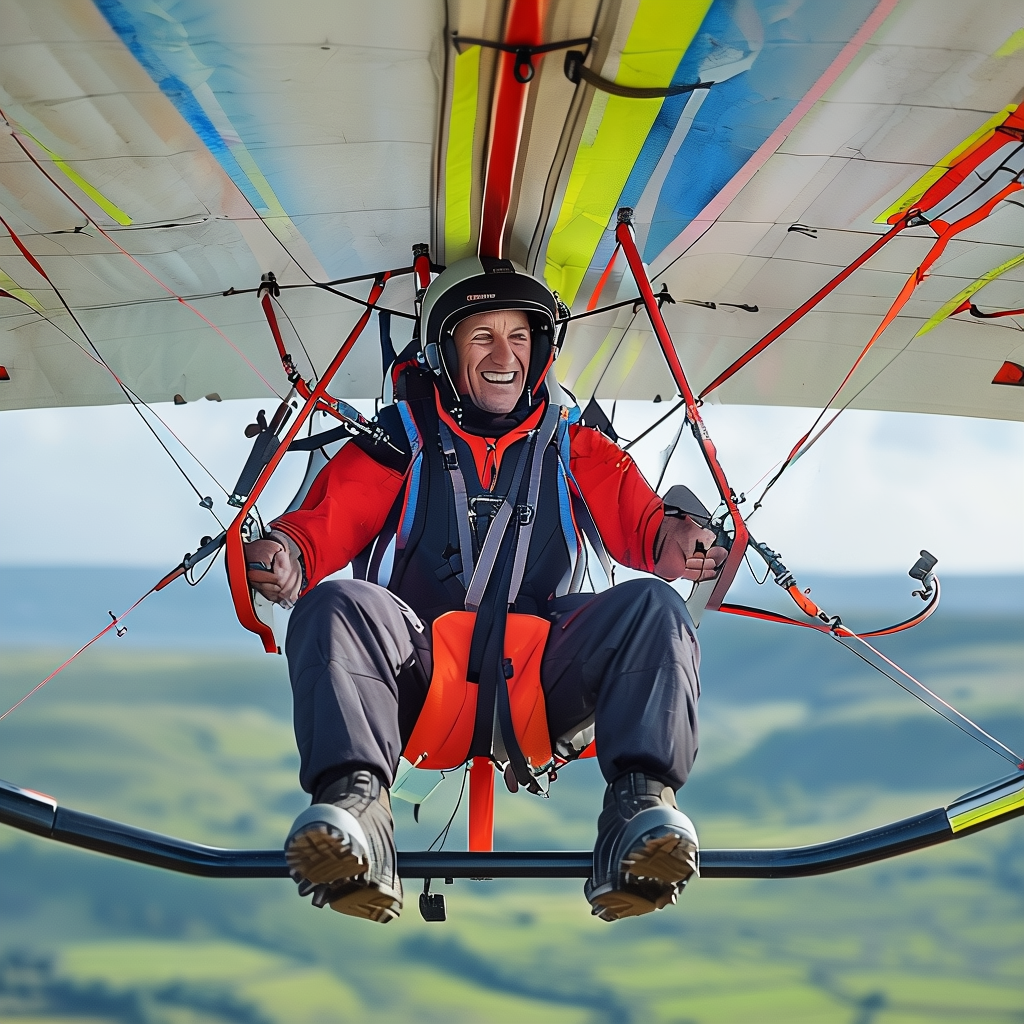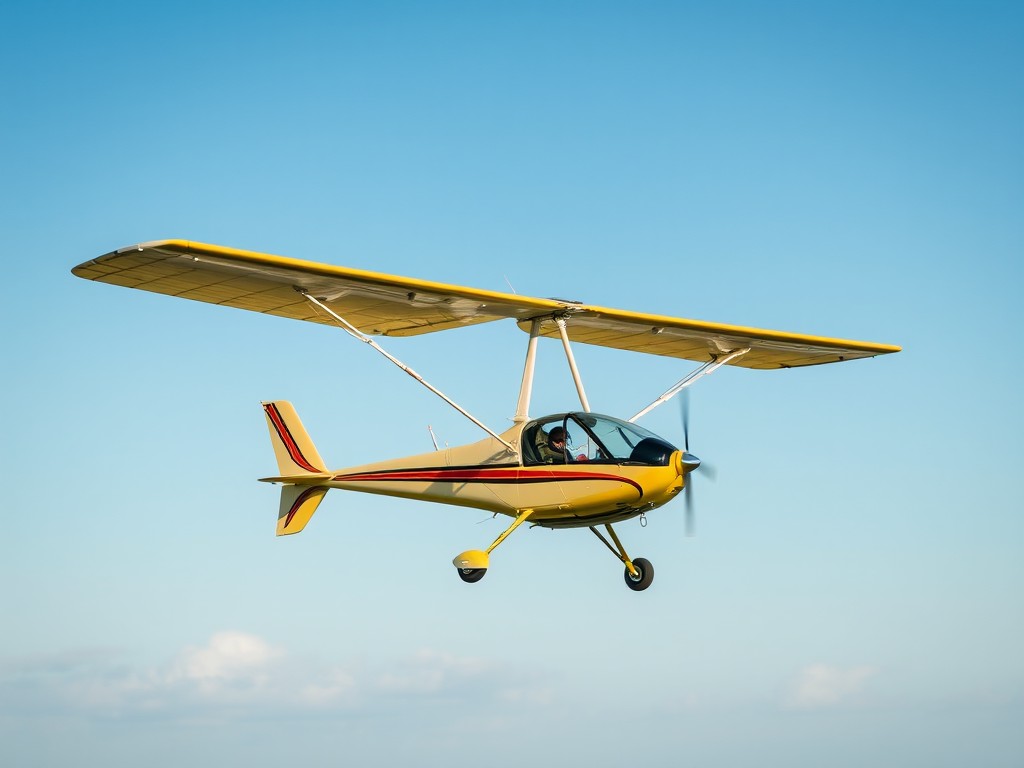Microlight flying, also known as ultralight aviation, offers a unique and exhilarating way to experience the freedom of flight. However, as with any aviation activity, safety is paramount. This article delves into the safety aspects of microlight flying, exploring the risks, regulations, and best practices to ensure a safe and enjoyable experience.
Table of Contents
Understanding Microlight Aircraft
Definition and types of microlights:
Microlights are tiny, light aircraft meant for sport and recreational flying. They are typically single-seater or two-seater, with a maximum takeoff weight of 472.5 kg (1041 lbs) in Europe and 544 kg (1200 lbs) in the United States. There are various types of microlights, including:
- Three-axis microlights: These resemble traditional aircraft with a fixed wing, fuselage, and tail.
- Weight-shift control microlights: These have a flexible wing and a movable control bar that shifts the pilot’s weight to control the aircraft.
- Powered paragliders: These are essentially paragliders with a small engine and propeller.
Key features and advantages:
Microlights offer several advantages over traditional aircraft, including:
- Affordability: They are generally cheaper to purchase, maintain, and operate than larger aircraft.
- Accessibility: They require less training and licensing compared to other types of aircraft.
- Simplicity: They are often easier to fly and maintain due to their simpler design.
- Versatility: They can be flown in a variety of conditions and terrains.
Popularity and usage:
Microlight flying is a popular recreational activity worldwide, with an estimated 20,000 microlights registered globally. They are used for various purposes, including:
- Pleasure flying: Enjoying the scenic views and the thrill of flight.
- Air sports: Participating in competitions and aerobatics.
- Aerial photography and surveying: Capturing stunning aerial images and data.
- Commuting and transportation: Reaching remote locations or traveling short distances.
Safety Statistics for Microlight Flying

Accident rates compared to other aircraft:
Microlight flying has a higher accident rate compared to larger, commercially operated aircraft. However, it is important to note that the accident rate per flight hour is lower than for general aviation aircraft. According to the UK Civil Aviation Authority, the accident rate for microlights in the UK is 1.25 per 10,000 flight hours, compared to 0.25 for general aviation aircraft.
Common causes of microlight incidents:
The most common causes of microlight incidents include:
- Pilot error: This is the most significant factor, accounting for over 50% of accidents.
- Weather conditions: Unfavorable weather conditions, such as strong winds or turbulence, can contribute to accidents.
- Mechanical failure: Although rare, mechanical issues can also lead to accidents.
- Terrain and airspace considerations: Collisions with obstacles or flying in restricted airspace can pose risks.
Trends in microlight safety over time:
The safety of microlight flying has improved significantly over the years due to advances in aircraft design, pilot training, and safety regulations. However, there is still room for improvement, and ongoing efforts are focused on further reducing the accident rate.
Regulatory Framework for Microlight Aviation

Licensing requirements for pilots:
Microlight pilots require a specific license to fly these aircraft. The licensing requirements vary depending on the country, but generally involve:
- Theoretical knowledge: Passing a written exam on aviation regulations, meteorology, and aircraft principles.
- Practical flight training: Completing a minimum number of flight hours under the supervision of an instructor.
- Medical examination: Obtaining a medical certificate to ensure physical fitness for flying.
Aircraft certification standards:
Microlights must meet specific certification standards to ensure airworthiness. These standards cover aspects such as design, construction, and performance.
Operational restrictions and guidelines:
Microlight operations are subject to various restrictions and guidelines, including:
- Flight limitations: Restrictions on airspace, altitude, and weather conditions.
- Equipment requirements: Mandatory safety equipment such as parachutes, life jackets, and communication devices.
- Maintenance requirements: Regular inspections and maintenance to ensure aircraft safety.
Differences in regulations across countries:
Regulations for microlight flying vary across countries. It is important for pilots to be familiar with the specific regulations applicable to their location.
Safety Equipment and Technology
Essential safety gear for microlight pilots:
Microlight pilots are required to carry specific safety equipment, including:
- Parachute: A parachute is essential for emergency situations.
- Life jacket: A life jacket is required for flights over water.
- Communication devices: A two-way radio is necessary for communication with air traffic control and other pilots.
- Navigation equipment: GPS or other navigation aids are essential for finding your way.
Advancements in microlight design:
Microlight design has evolved significantly over the years, with improvements in:
- Aerodynamics: More efficient wing designs for better performance and stability.
- Materials: Lighter and stronger materials for improved safety and durability.
- Engines: More reliable and fuel-efficient engines for longer flight times.
Navigation and communication tools:
Modern microlights are equipped with advanced navigation and communication tools, including:
- GPS systems: For accurate positioning and navigation.
- Transponders: For communication with air traffic control.
- Collision avoidance systems: To alert pilots of potential collisions.
Weather monitoring systems:
Weather monitoring systems are crucial for microlight pilots to assess weather conditions and make informed decisions. These systems include:
- Aviation weather reports: Providing real-time information on wind, visibility, and cloud cover.
- Onboard weather radar: Detecting and avoiding areas of bad weather.
Training and Skill Development
Importance of proper instruction:
Proper instruction from a qualified microlight instructor is essential for developing safe flying skills. This includes:
- Theoretical knowledge: Understanding the principles of flight, aircraft systems, and safety procedures.
- Practical flight training: Gaining experience in handling the aircraft in various conditions.
- Emergency procedures: Learning how to respond to emergencies such as engine failure or loss of control.
Ongoing education and recurrent training:
Microlight pilots are required to undergo ongoing education and recurrent training to maintain their skills and knowledge. This includes:
- Refresher courses: Regularly reviewing flight procedures and safety protocols.
- Flight reviews: Periodic assessments by an instructor to ensure continued proficiency.
Simulation and practice techniques:
Simulation and practice techniques can help microlight pilots improve their skills and prepare for different scenarios. This includes:
- Flight simulators: Realistic simulations of flight conditions and emergencies.
- Practice flights: Regularly flying in different conditions to gain experience.
Building experience safely:
Microlight pilots should gradually build their experience by:
- Starting with simple flights: Flying in calm conditions and familiar airspace.
- Increasing complexity gradually: Expanding to longer flights, different weather conditions, and more challenging airspace.
- Flying with experienced pilots: Learning from more experienced pilots and gaining valuable insights.
Risk Factors in Microlight Flying
Weather-related challenges:
Weather is a significant risk factor in microlight flying. Strong winds, turbulence, and low visibility can create hazardous conditions.
Mechanical issues and maintenance:
Mechanical issues, although rare, can occur and lead to emergencies. Regular maintenance is crucial to prevent such issues.
Pilot error and decision-making:
Pilot error is the most common cause of microlight accidents. Poor decision-making, inadequate training, and lack of experience can contribute to errors.
Terrain and airspace considerations:
Collisions with obstacles or flying in restricted airspace can pose risks. Pilots need to be aware of their surroundings and airspace regulations.
Best Practices for Safe Microlight Operations
Pre-flight checks and preparation:
Thorough pre-flight checks are essential to ensure the aircraft is airworthy and safe for flight. This includes:
- Inspecting the aircraft: Checking for any damage or defects.
- Checking fuel levels: Ensuring sufficient fuel for the planned flight.
- Reviewing weather conditions: Assessing the weather forecast and potential hazards.
- Filing a flight plan: Informing air traffic control of your flight route and estimated arrival time.
In-flight safety procedures:
Following safe in-flight procedures is crucial for avoiding accidents. This includes:
- Maintaining situational awareness: Being aware of your surroundings, other aircraft, and weather conditions.
- Adhering to air traffic control instructions: Following instructions from air traffic controllers and maintaining safe separation from other aircraft.
- Avoiding risky maneuvers: Not attempting maneuvers beyond your skill level or in hazardous conditions.
Emergency response techniques:
Microlight pilots should be prepared to respond to emergencies such as engine failure or loss of control. This includes:
- Practicing emergency procedures: Regularly reviewing and practicing emergency procedures.
- Staying calm and making rational decisions: Maintaining composure and making clear headed decisions in an emergency.
- Communicating with air traffic control: Informing air traffic control of the emergency and requesting assistance.
Post-flight analysis and learning:
After each flight, it is important to analyze your performance and identify areas for improvement. This includes:
- Reviewing your flight log: Recording details of the flight, including weather conditions, route taken, and any incidents.
- Reflecting on your decision-making: Analyzing your decisions during the flight and identifying any potential errors.
- **Seeking feedback from instructors or experienced pilots
Conclusion
Microlight flying offers a unique and exhilarating experience, but it is important to prioritize safety. By understanding the risks, regulations, and best practices, microlight pilots can minimize the chances of accidents and enjoy a safe and rewarding flying experience. Remember, safety is a shared responsibility, and pilots, instructors, and regulatory authorities all play a role in ensuring the safe operation of microlight aircraft.
Here are some additional tips for safe microlight flying:
- Fly within your limits: Don’t attempt maneuvers or flights beyond your skill level or experience.
- Respect the weather: Always check the weather forecast and avoid flying in hazardous conditions.
- Maintain your aircraft: Regularly inspect and maintain your aircraft to ensure it is airworthy.
- Never fly alone: Always fly with a buddy or experienced pilot, especially when venturing into new areas or challenging conditions.
- Stay informed: Keep up-to-date with the latest safety information and regulations.
By following these guidelines and prioritizing safety, you can enjoy the freedom and exhilaration of microlight flying while minimizing the risks. So, take to the skies, explore the world from a new perspective, and experience the joy of flight in a safe and responsible manner.
